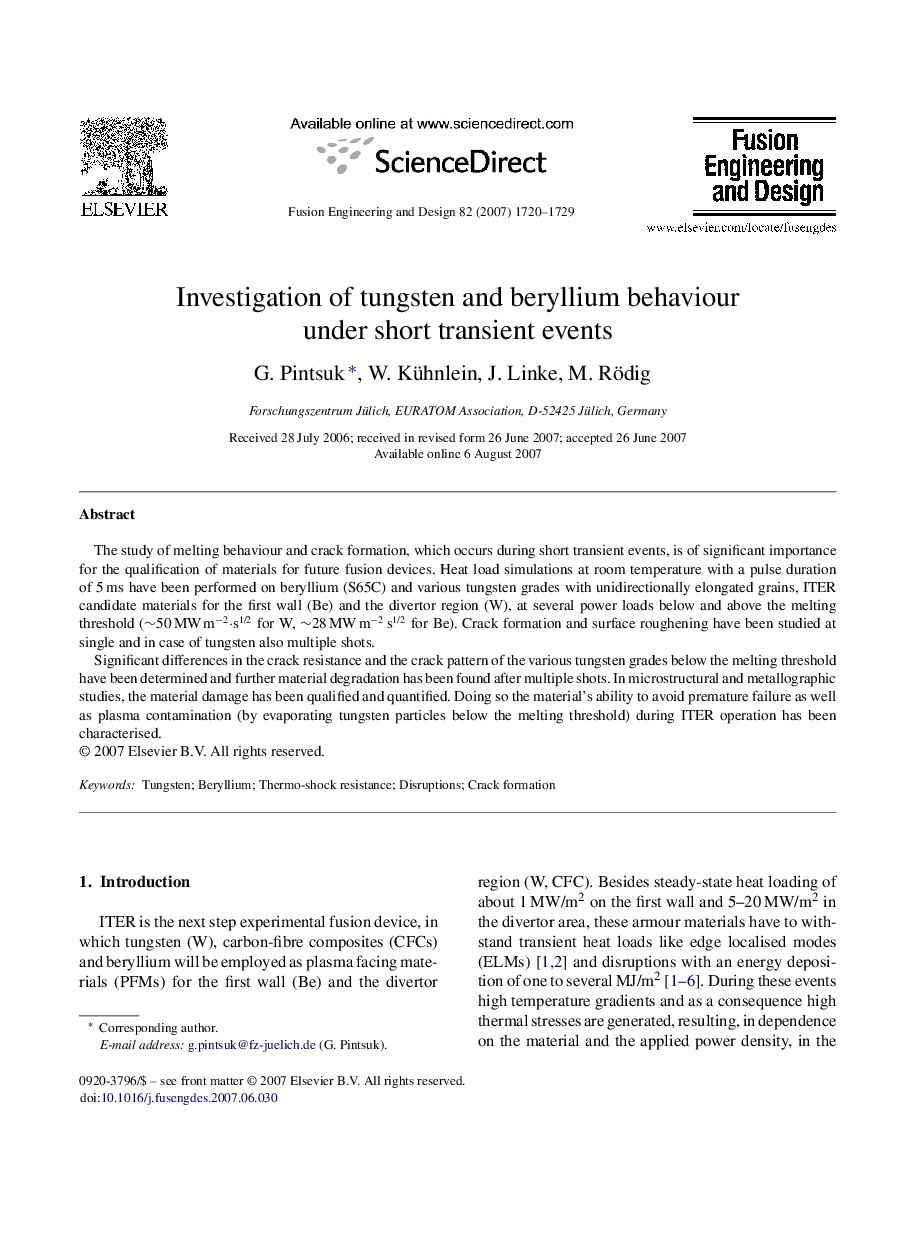| Article ID | Journal | Published Year | Pages | File Type |
|---|---|---|---|---|
| 273556 | Fusion Engineering and Design | 2007 | 10 Pages |
The study of melting behaviour and crack formation, which occurs during short transient events, is of significant importance for the qualification of materials for future fusion devices. Heat load simulations at room temperature with a pulse duration of 5 ms have been performed on beryllium (S65C) and various tungsten grades with unidirectionally elongated grains, ITER candidate materials for the first wall (Be) and the divertor region (W), at several power loads below and above the melting threshold (∼50 MW m−2·s1/2 for W, ∼28 MW m−2 s1/2 for Be). Crack formation and surface roughening have been studied at single and in case of tungsten also multiple shots.Significant differences in the crack resistance and the crack pattern of the various tungsten grades below the melting threshold have been determined and further material degradation has been found after multiple shots. In microstructural and metallographic studies, the material damage has been qualified and quantified. Doing so the material's ability to avoid premature failure as well as plasma contamination (by evaporating tungsten particles below the melting threshold) during ITER operation has been characterised.
